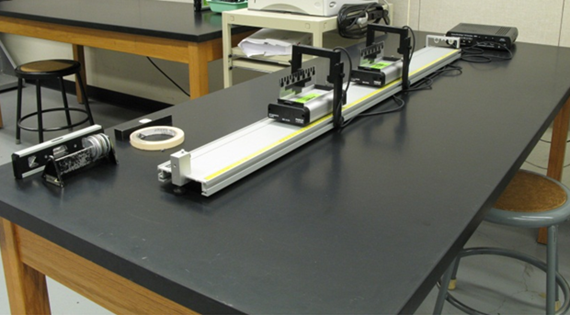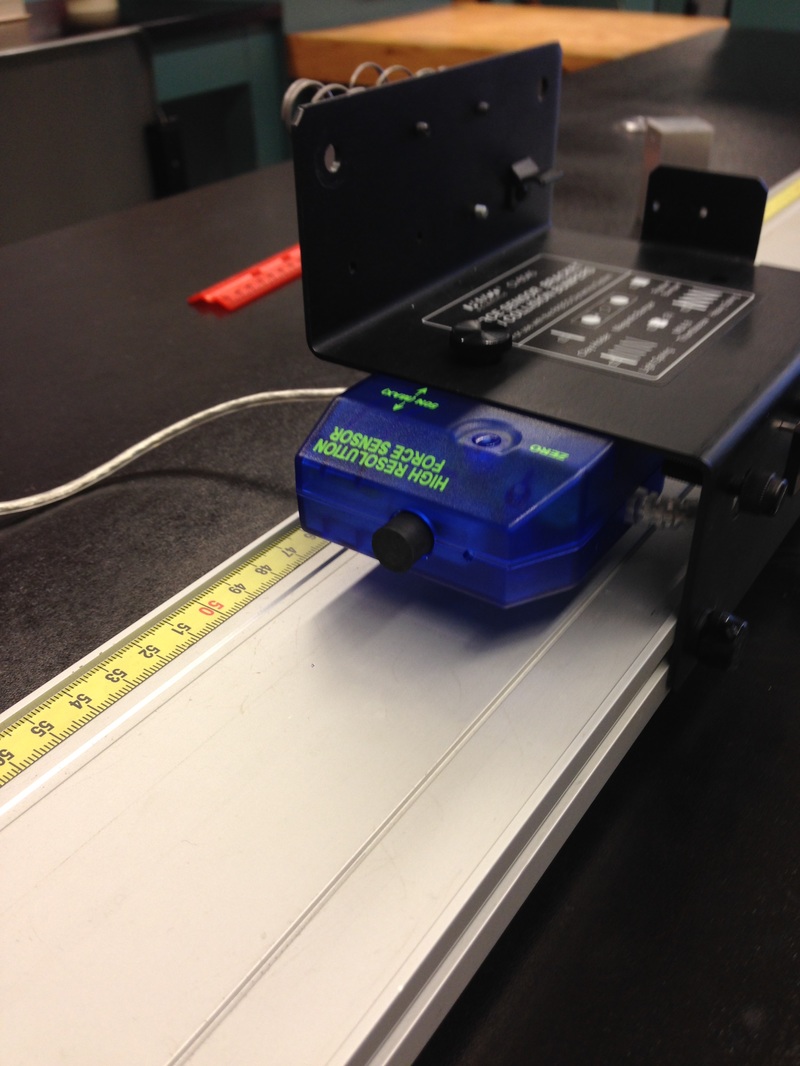
The blue cart is at rest before, and traveling at some positive velocity after the collision. You are only interested in the velocities just before and just after interactions-collisions. You have five velocities, but you're interested in only four of them. The blue cart is pushed to the right with an equal but opposite force, thus giving it a positive velocity which appears to be somewhat faster than the red cart's initial velocity. The red cart is pushed to the left, slowing it down. (We ignore acceleration in these graphs.) The red cart collides with the blue cart. "Last in, first out." The last mass added (the top one) is the first one removed by clicking.įigure 3 When the launcher is fired, the red cart is given an initial velocity. You remove masses by double-clicking on the stack of masses. You'll soon need to change the masses on the carts.

Switch to the "Spring Plunger" if you still have the "Velcro ®" on. Attach it to its launcher and pull back the spring about 50%. Try this: Double the mass of the red cart by adding 250 grams. This would be a good time to try out the "Motion Sensor." It's a bit trickier with this lab since you have two carts to work with, as well as abrupt changes in speed and direction. Try launching both at once ( release both). Try again with the launcher spring pulled back different distances. Now cock the launcher spring by pulling back the white circle on the side of the launcher. Here's how they're operated: Drag a cart to the launcher bumper and continue dragging it until it appears to go behind the bumper. Bang the carts around a bit to see how the mismatched carts behave. You have to release the mass while it's over the mast (the rod holding up the flag). The best way to stop them both is with the Stop Carts button. But when you release the mouse button, the unclicked cart starts moving again.

You'll see that they bounce nicely off of each other and lose a bit of speed when they collide with the orange bumpers. Toss the carts around a bit to see how they interact.
#Impulsive force model momentum in collisions lab answers trial
Let's take a trial run with the apparatus. This chapter derives all essential fundamental relations of Newtonian continuum mechanics and forms the basis for the formulation when we unify the laws of Newtonian mechanics with the laws of thermodynamics in Chapter 4.Figure 1 : Carts, track, and motion sensor in the Virtual Momentum Lab simulation All of the following mechanics theories are based on the three universal laws of motion of Newton. Because fundamental equations in continuum mechanics are based on Newton’s work, therefore continuum mechanics is also called Newtonian mechanics. Therefore, we find it necessary to quote these derivations from Sir Isaac Newton directly. Of course, Newton’s universal laws of motion are very well-known to most readers of this book however, their historical context and.

Understanding their implications in historical context is essential to understand these simple and probably the most famous physics equations. It is essential to start the discussion about continuum mechanics with universal laws of motion as given by Newton. (C) 2000 American Association of Physics Teachers. Students also show that angular momentum conservation is independent of the choice of origin, that the center of mass of the asymmetric object follows a linear trajectory, and that the center of mass of the whole system follows a linear trajectory. Using their digital video, students create a stroboscopic image of the two objects' trajectories and show that both linear and angular momentum are conserved to within a few percent, the limit of experimental uncertainty. One object has an asymmetric mass distribution and gains rotational kinetic energy as a result of the collision. To do this, students make a digital video of a two-object collision on an air table. Students observe that angular momentum is conserved in systems where the initial conditions involve only translational motion, and yet the final conditions include rotational motion. We describe a new undergraduate mechanics laboratory experiment that illustrates principles of linear and angular momentum conservation.


 0 kommentar(er)
0 kommentar(er)
